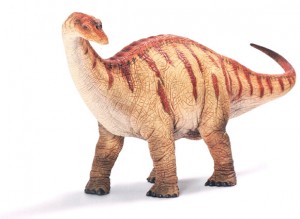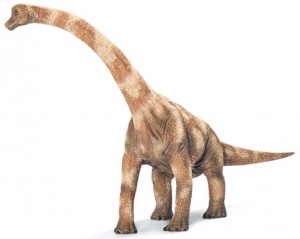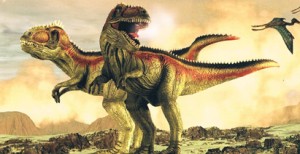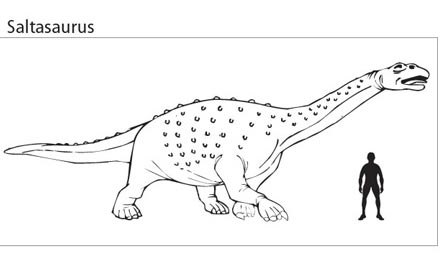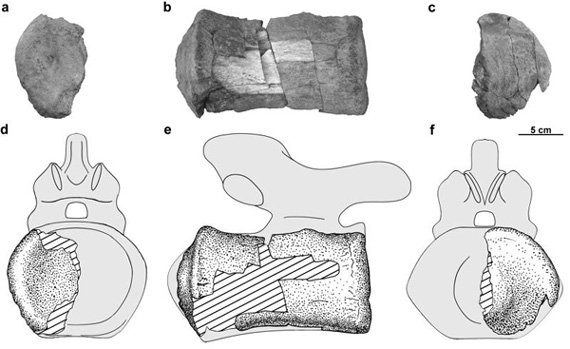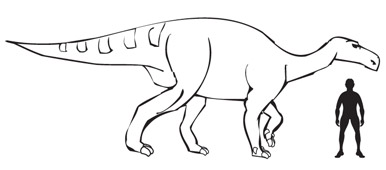New Species of Horned Dinosaur Announced – After Geologist thought Fossils Too Fragmentary to Exhibit
With the vast amount of dinosaur fossil material not on public display there are bound to be one or two surprises in store for those scientists who explore museum collections. A number of museums contain a vast depository of fossil material, including dinosaur fossils, some of this material may yet to be studied, whilst other specimens may be wrongly labelled. So, if you want to find a new dinosaur species, you might want to explore in the field, or you could go through the museum’s existing collection to see what wonders you can unearth.
New Dinosaur Species
This is exactly what a team of palaeontologists did, exploring the fossil collection of the Natural History Museum (London) and, as a result, a new species of horned dinosaur (ceratopsian) has been named and described – Spinops sternbergorum.
Part of the skulls from at least two individuals were discovered in 1916 by Charles and Levi Sternberg, whilst exploring the fossil rich sediments of Alberta (Canada).
Led by their father, Charles, the Sternberg family made a number of spectacular dinosaur discoveries in the late 19th and early 20th Centuries as they explored Canada. Charles Sternberg, for example was responsible for naming and describing the hadrosaur Edmontosaurus, as well as a number of other dinosaurs and several other vertebrates.
As with a number of fossil bones excavated from the Canadian provinces, the elements of the dinosaur skulls were dispatched to London for preparation and further study at the Natural History Museum.
Spinops sternbergorum
However, so fragmentary were the fossils that a geologist at the museum at the time, Arthur Smith Woodward, declared them unfit to exhibit and doomed the seventy-six million-year-old specimens to remain locked away. It took a team of scientists to recognise the importance of the specimens, to have them cleaned and finally studied.
Spinops sternbergorum (the name honours the Sternberg family and means “Old Spine Face”), was a member of the Centrosaurinae – horned dinosaurs with relatively short neck frills. Perhaps closely related to Centrosaurus and the likes of Styracosaurus, this 2,000 kilogramme herbivore had a single large horn projecting from the top of the nose and a bony neck frill that sported at least two long, backward pointing spikes as well as two forward-curving bony hooks. There were also two smaller horns, projecting upwards on the top of the orbit (eye socket).
An Illustration of Spinops sternbergorum

An illustration of a Spinops (horned dinosaur model). The PNSO Duke the Spinops dinosaur model.
The picture (above) shows a PNSO Spinops dinosaur model.
To view the PNSO range of prehistoric animal models and figures: PNSO Dinosaur Models.
Andrew Farke of the Raymond M. Alf Museum of Palaeontology, in Claremont, California (United States) and lead author on the study naming and describing this newest member of the Centrosaurinae stated:
“My colleagues and I were pleasantly surprised to find these fossils on the museum shelf, and even more astonished when we determined that they were a previously unknown species of dinosaur.”
This is not the first time a new dinosaur species has been discovered in this manner, nor do we think that it will be the last. To read about the discovery of a new type of long-necked dinosaur (sauropod) found in the Natural History Museum: Where’s the best place to find a new Dinosaur species? In a Dinosaur museum of course!
The fossil fragments that compose the holotype material for this new plant-eating dinosaur may be fragmentary, but they were discovered in close proximity to each other in a single deposit and from this material the Sternbergs were sure they had found something unique and exciting.
Ironically, these fragmentary specimens dismissed as “rubbish” more than ninety years ago, may prove to be extremely important to palaeontologists. Not only do these fossils represent a new species, but they may provide an insight into the evolution of the bizarre horns and head crests of the ceratopsians. Spinops sternbergorum may be closely related to the likes of Centrosaurus and Styracosaurus, but the unique anatomy and morphology of the bony neck frill may give scientists a better understanding of how such structures evolved.
Specifically, these fossils clarify the identification of the long frill spikes common in some horned dinosaurs. – such as Styracosaurus spp.
Prior to the careful study of the Spinops material, palaeontologists had thought that spikes on the neck frill had evolved only once in the ceratopsian group. However, these fossils of Spinops show that the bases of the spikes are located in different positions compared to the likes of Styracosaurus, implying that these structures evolved independently.


